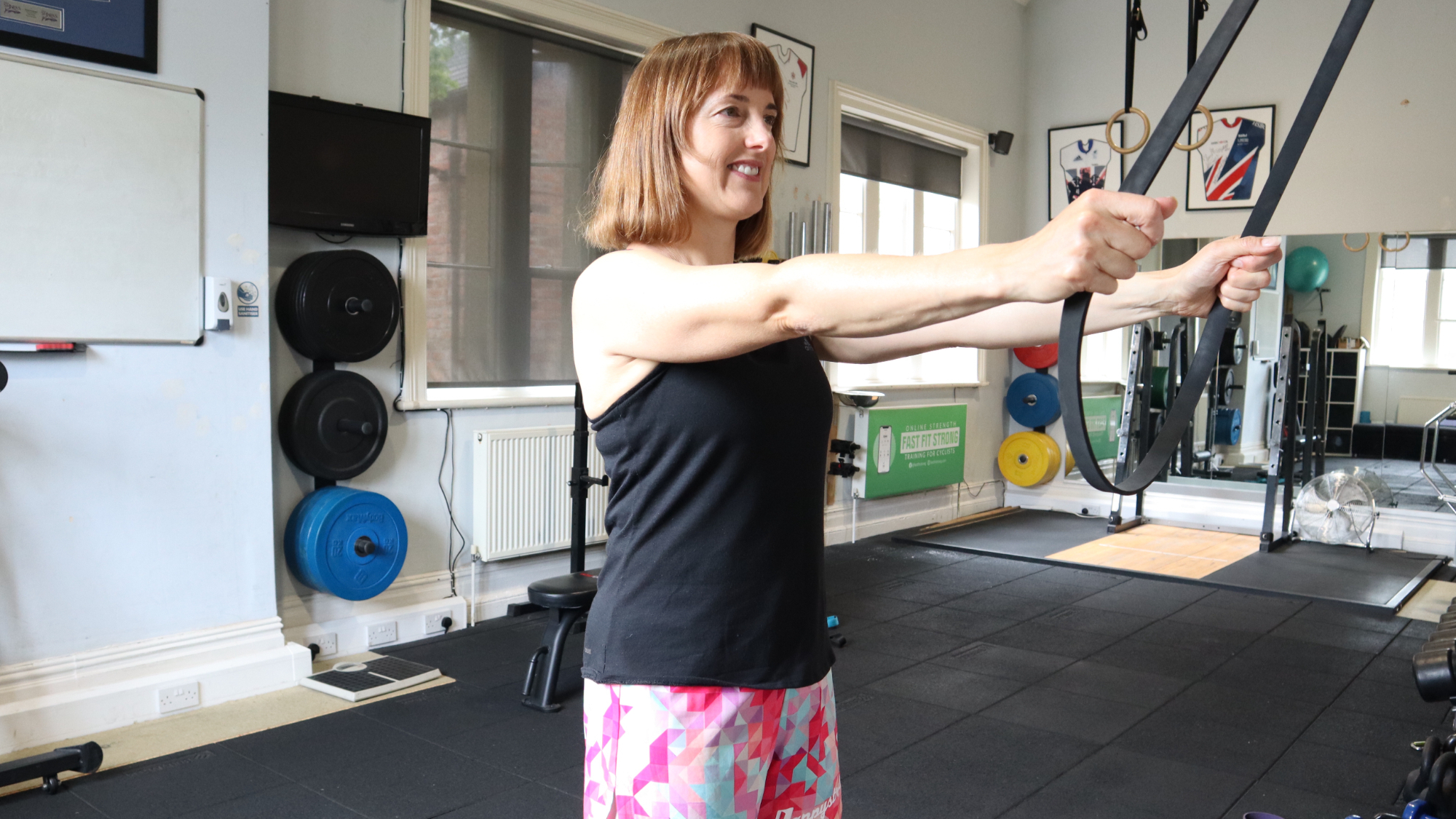
I’m an experienced gym-goer, and someone who is comfortable with exercise machines and free weights, but I’ve always found resistance bands confusing. All those sizes and types: how do you know which to use when and whether you’re doing it correctly?
As a runner I like to keep things simple and time-efficient, so I’ve never made the effort to understand the benefits of the best resistance bands. Yet, when my marathon training was halted by iliotibial band syndrome (ITBS), also known as runner’s knee, I realised I had to take mobility more seriously.
I was surprised to find resistance bands were pivotal to my recovery. As with many overuse injuries, ITBS can be hard to solve with foam rolling or stretching, and often requires a more targeted approach.
So, I switched running for hiking and put my energies into a rehab programme that had resistance band sessions as a crucial element. Here’s how it went.
Bands are more effective than you'd think
My personal trainer, Scott Pearson at FastFitStrong, integrated more resistance band moves into my strength program to bolster my recovery. I used to think of these as part of a warm-up, but I started to enjoy them in their own right.
I focused on hip strengthening (including clam shells) and core work (for example, banded bird-dogs are a great way to add a challenge once you’ve mastered the basic exercise).
I also took advice from the coach Erin Carson at ECFIT Strength who uses resistance bands as a key part of her strength and conditioning programs. To help strengthen my body and reduce the effects of ITBS, I wanted to master these five exercises.
- Seated band row: improves shoulder mobility and opens up the upper-back.
- Straight arm pull-down: builds strength in triceps and shoulders.
- Face pull: encourages external shoulder rotation.
- Loaded clam-shell: activates glutes and core, and develops hip strength.
- Straight leg abduction: to improve hip strength and create pelvic stability.
After two weeks, I found that my injury was improving and I even felt like I could recruit specific muscles during weights-based exercises — I could activate my glutes and posterior chain more effectively during squats, for instance.
Through performing the upper-body exercises I became more aware of bodily alignment and how I was moving when not exercising. This was particularly positive because understanding your how your body moves is a vital part of your recovery.
Why are resistance bands so effective?

My perception of resistance bands before my injury was that they were for low-intensity training, like using yoga straps for stretching. But they actually sparked a connection for me between mindful movement and strength training — two practices I enjoy, but often separately.
Having not really thought about it before, I was curious why these elastic bands could be so effective. According to Carson, the main mechanism is that they work primarily on posture: they improve “how you stand against gravity”.
As they work on the basics of simple standing and functional strength movements, bands can be used to connect all the main muscle groups, preventing (or improving) the imbalances that cause niggles or injuries, such as the one that I had.
Plus, if you're comparing resistance bands vs weights, the bands are a great place to start as they don't cost much, each set comes with a range of strengths, and some include handles and looped bands for different exercise.
For each exercise there are options for progression and once you’re confident with these there are other workouts to try. You can even replace gym workouts with banded routines, like this resistance band leg workout.
It's not just about building muscle

Carson stresses that getting to the next level is not always the purpose. She says that when using bands “the body senses safety and stability," so rather than keep pushing further, it’s better “to just keep doing it."
After four weeks of working with resistance bands I’m feeling more confident and am convinced they’ll play a central role in my future fitness. I’ve noticed that tightness in my lower back and hips has reduced and my ITBS has improved.
But it's also develop build my mind-muscle connection so I'm more aware of how my body moves. Plus, whereas I usually I only think about my breathing when in a yoga class, now I’m tuned into it when in the gym or doing home workout.
The five moves I focused on work muscles all over your body, but if you're looking for the most efficient way to train, use this resistance band ab workout to strengthen your core, and, in turn, improve your posture and boost your stability.







